Pallasites
Modern meteoriticists use the term "pallasite" to describe a
certain structural class of stony-iron meteorites that contains abundant
silicate inclusions in a nickel-iron matrix. Usually, the silicates are
large olivine crystals, often of gem quality. These peridots make the
pallasites some of the most attractive meteorites known, and cut and
polished pallasite slices are highly coveted among meteorite collectors.
Sometimes pallasites and pallasitic peridots are used in jewelry, making
them the only genuine cosmic gemstones on Earth.
Based on their origin and formation history, the pallasites are
regarded as samples of core/mantle boundary material from differentiated
asteroids, inferring that a close relationship exists to the iron
meteorites. Upon etching, larger metal portions of polished slices display
typical Widmanstätten figures. In addition to this, pallasites display
chemical, elemental, and isotopic trends that link them to specific
chemical groups of iron meteorites, linking their origin to a common
parent body. Hence, they are classified into three distinct groups or
grouplets, similar to the chemical groups of the iron meteorites: (1) the
main group pallasites, (2) the Eagle Station grouplet, and (3) the
pyroxene grouplet.
|
|
Fukang
Found in 2000 in China
TKW 950 Kg
Main group pallasite
|
|
|
|
|
|
|
|
|
|
|
|
|
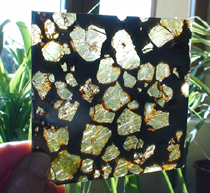 
|
|
|
|
Fukang 00
86 gr
Huge and thin slice with perfect quality of olivine
SOLD |
|
|
|
|
|
|
|
Fukang 01
90 gr
Big slice with translucid olivine !
SOLD
|
|
|
|
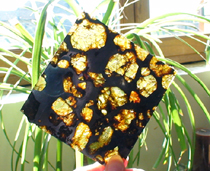  |
|
|
|
|
|
|
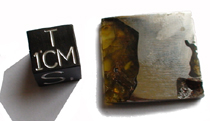 
|
|
|
|
Fukang 02
6.62 gr
Very nice slice of pallasite !
SOLD |
|
|
|
|
|
|
|
Fukang 03
6.290 gr
Nice slice with translucid olivine !
SOLD
|
|
|
|
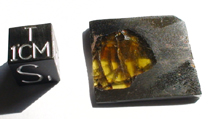 
|
|
|
|
|
|
|
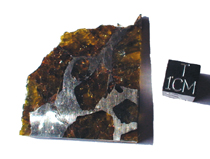 
|
|
|
|
Fukang 04
20.11 gr
Very, very nice slice with translucid olivine !
|
|